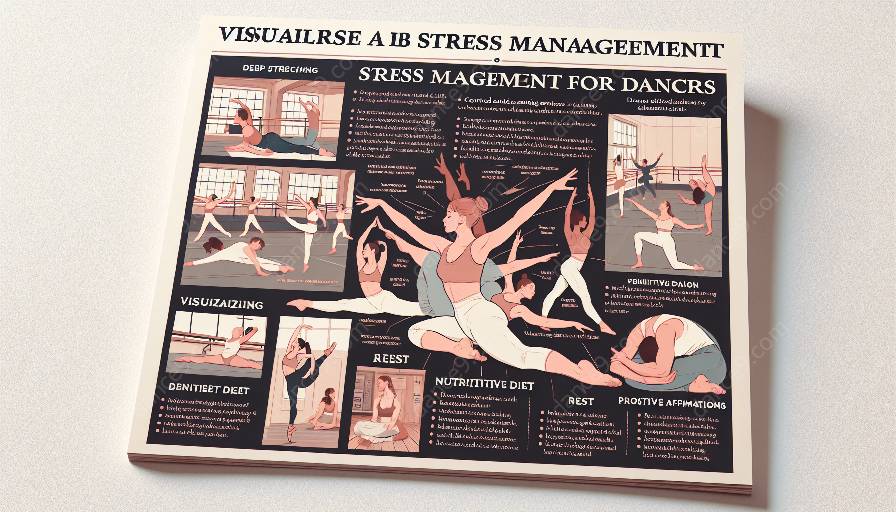Dance is a physically demanding and mentally challenging profession that requires long hours of training, rehearsals, and performances. As a result, dancers often experience high levels of stress and pressure, which can impact their overall well-being and career longevity. It is crucial for dancers to learn effective stress management techniques to maintain their physical and mental health and sustain their careers in the long term.
Understanding Stress in Dance Careers
Before delving into stress management techniques for dancers, it is important to understand the unique stressors that dancers face in their careers. The intense physical demands, frequent auditions, competition, and the constant pressure to excel contribute to heightened stress levels among dancers. Additionally, the risk of injuries and the fear of losing opportunities can further exacerbate stress and anxiety.
Promoting Longevity and Sustainability
Longevity and sustainability in dance careers are essential for dancers to thrive in their profession. Stress management plays a significant role in promoting longevity by helping dancers cope with the demands of their career and maintain their physical and mental well-being. By addressing stress and implementing sustainable practices, dancers can prolong their careers and enhance their overall performance.
Stress Management Techniques for Dancers
Recognizing the need for stress management, dancers can benefit from various techniques to effectively manage and reduce stress. Some of the key stress management techniques for dancers include:
- Mindfulness and Meditation: Practicing mindfulness and meditation can help dancers focus on the present moment, alleviate anxiety, and enhance mental clarity.
- Physical Conditioning: Engaging in regular physical conditioning and strengthening exercises can enhance resilience, minimize the risk of injuries, and boost overall well-being.
- Time Management: Establishing a balanced schedule, prioritizing rest and recovery, and effectively managing time can prevent burnout and reduce stress levels.
- Support Systems: Building a strong support network, seeking guidance from mentors or professionals, and connecting with fellow dancers can provide emotional support and alleviate stress.
- Healthy Lifestyle Practices: Embracing a healthy diet, staying hydrated, getting adequate sleep, and engaging in relaxation techniques can contribute to overall well-being and stress reduction.
- Self-Care Strategies: Incorporating self-care activities such as massage therapy, stretching routines, and other stress-relieving practices can help dancers manage physical and emotional stress.
The Importance of Physical and Mental Health in Dance Careers
Physical and mental health are integral components of a successful and sustainable dance career. It is imperative for dancers to prioritize their well-being to prevent burnout, injuries, and mental exhaustion. By maintaining a balanced approach to physical and mental health, dancers can enhance their performance, creativity, and longevity in the dance industry.
Conclusion
Promoting longevity and sustainability in dance careers through stress management is a holistic approach that addresses the physical, mental, and emotional well-being of dancers. By cultivating effective stress management techniques, dancers can navigate the challenges of their profession, enhance their resilience, and ensure a sustainable and fulfilling career in dance.


































